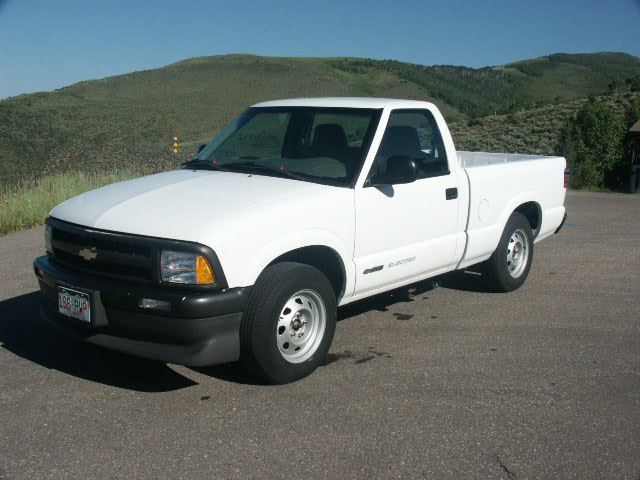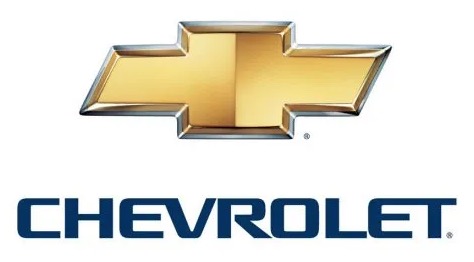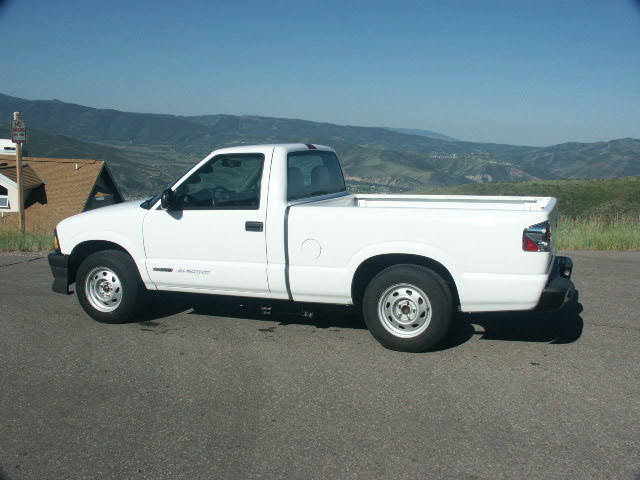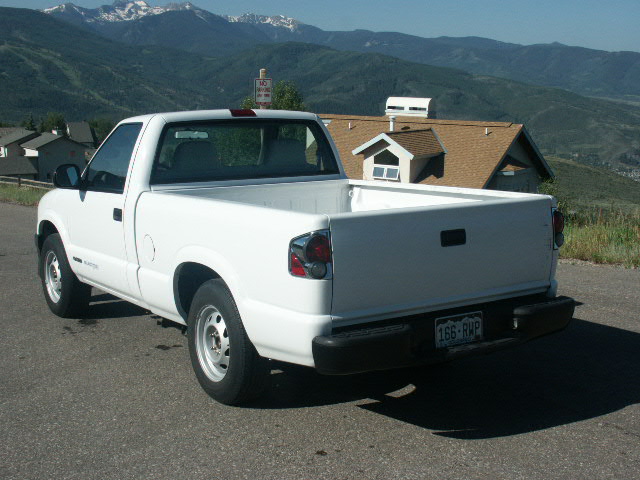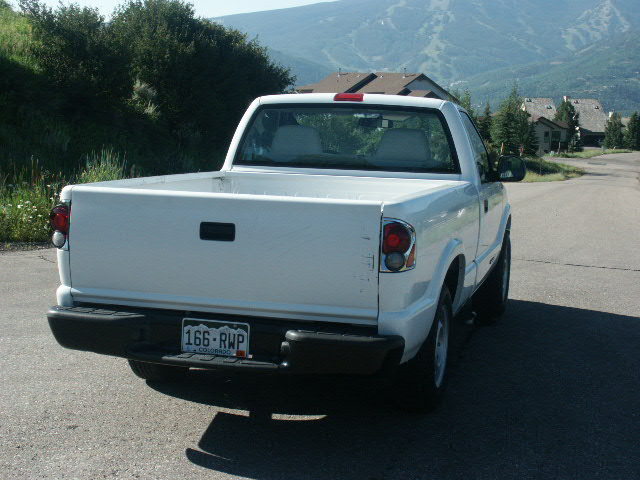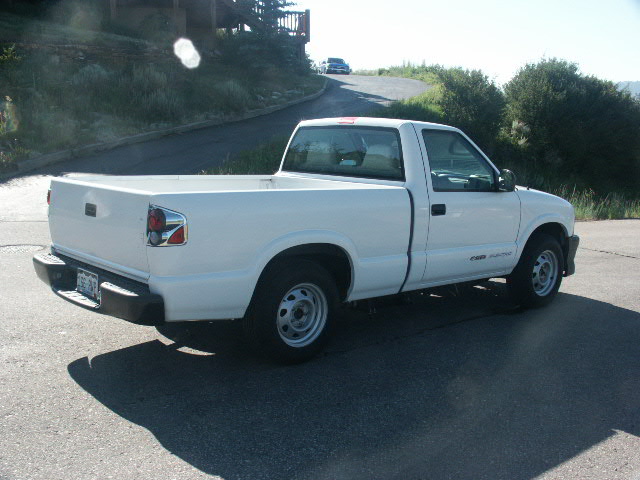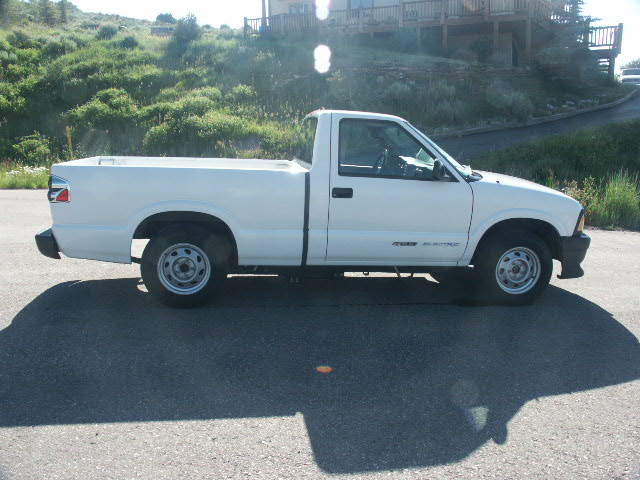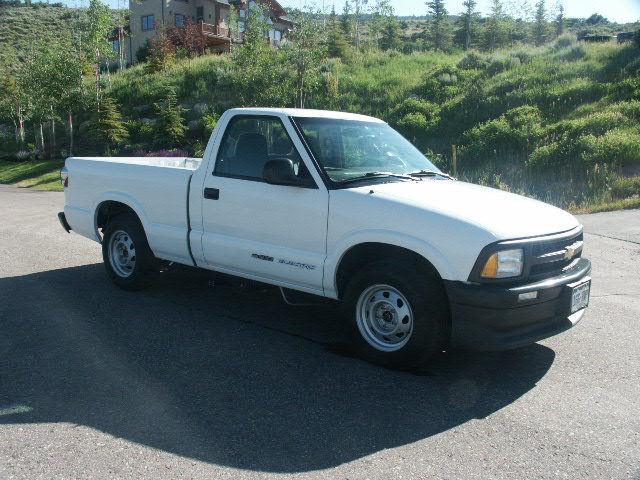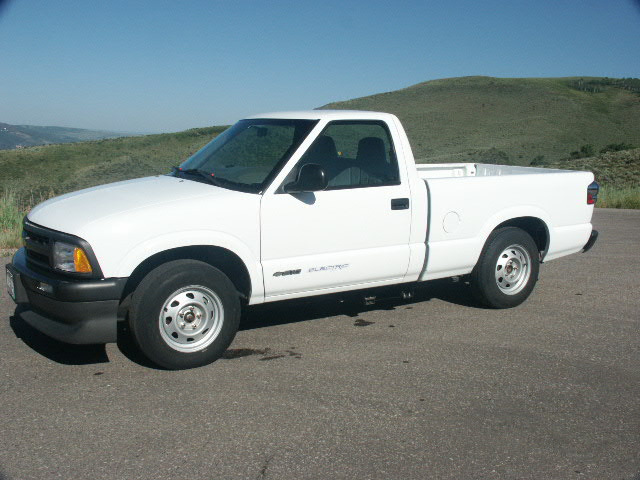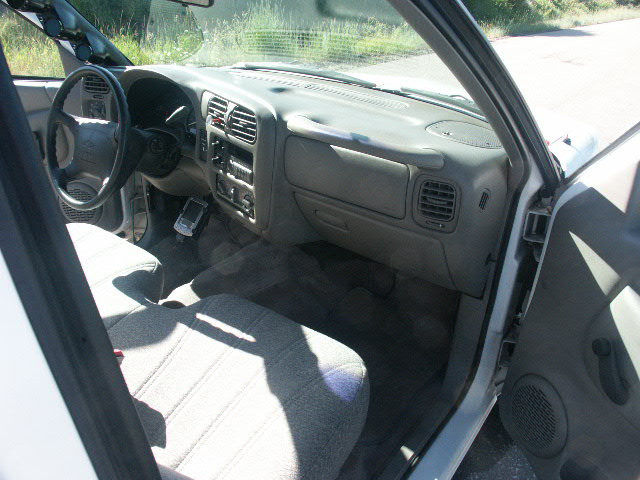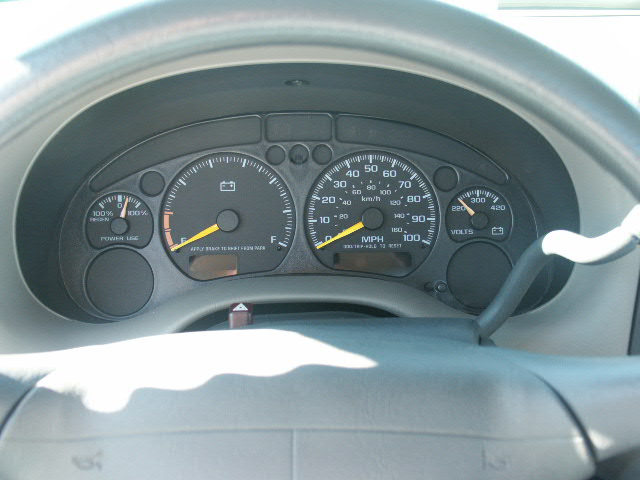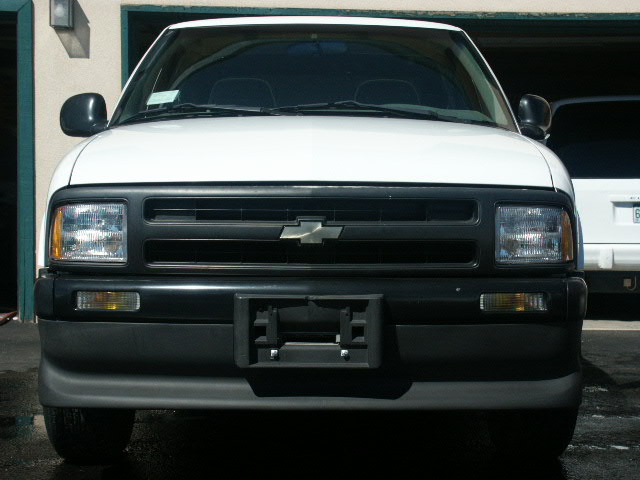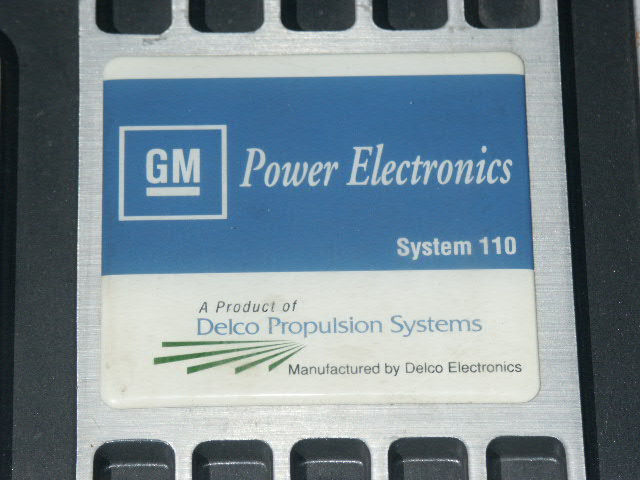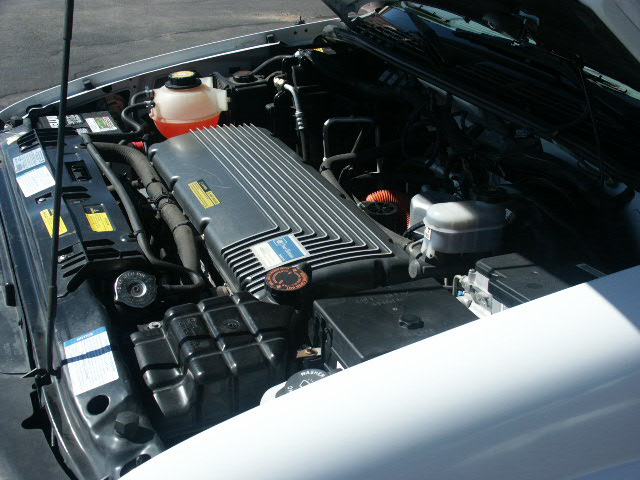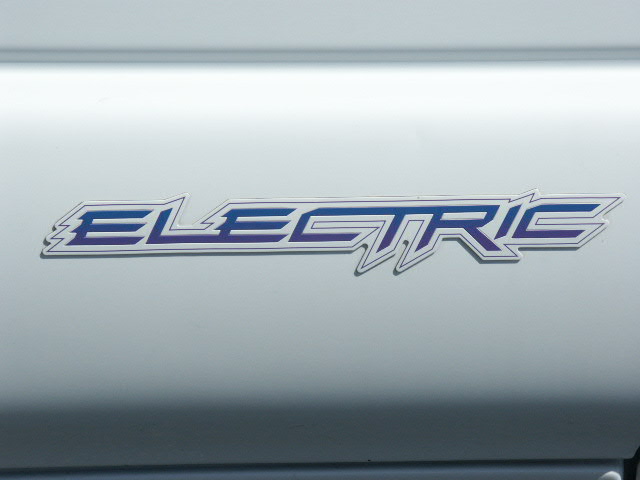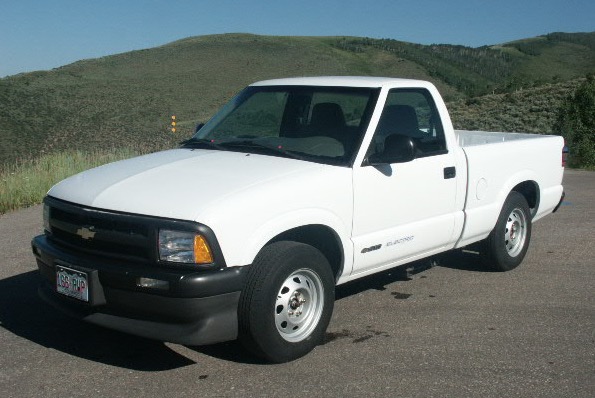
1998 Chevrolet S-10E OEM EV
" S-10E "
---> Electric Truck <---
===
Vehicle Description
EV1 System 110 Inverter/Drivetrain
The Chevrolet S-10 Electric was introduced in 1997 by General
Motors, updated in 1998, and then discontinued. It was
an OEM BEV variant of Chevrolet's S-10 pickup truck which ran
solely on electricity, and was marketed primarily to
utility fleet customers.
Design
General Motors started with a regular cab, short-box (6' bed)
S-10 pickup, with a base level trim package, added a
half tonneau cover for aero improvements. In place of a typical
inline four cylinder or V-6 engine, the Electric S-10 EV was
equipped with an 85 kW (114 horsepower) three-phase, liquid cooled
AC induction motor, based on GM's EV1 electric coupe. The EV1
had a 100 kW motor, GM reduced the S-10EV's motor
because of the additional weight and drag of the truck so as not
to over stress the traction pack.
Other than the reduced motor size, the majority of power electronics
were carried over from the EV1, which mandated that the
Electric S-10 use a front-wheel-drive configuration, unlike the
rear-wheel-drive setup found in stock S-10's
Batteries
Similar to the Gen 1 EV1's setup, the 1997 Electric S10 stored
and sourced its power from a lead acid battery pack.
Manufactured by Delco Electronics, the1400 lb (635 kg) pack
consisted of 27 batteries, with one module designated as an
"auxiliary" cell. These early traction packs reportedly offered 16.2
kilowatt-hours for propulsion, and offered a varying
driving range. In 1998, Ovonic NiMH batteries became available.
The Ovonic batteries were lighter at 1043 lb (473 kg) and
had 29 kilowatt-hours of storage for longer range. NiMH also had
longer a life span but cost more than the lead acid option.
The vehicle pictured below has been retrofitted with a Panasonic
EV-95 traction pack of the variety that the Toyota Rav4-EV uses. The
battery pack was located between the frame rails, beneath
the pickup bed.
Charging
The S-10 EV charges using the Magne Charger inductive paddle
charging system, originally produced by Hughes Power Systems and
later by General Motors subsidiary Delco Electronics after GM's
purchase of Hughes. The inductive charging paddle is
model J1773 or the 'large' paddle commonly referred to as LPI
for Large Paddle Inductive. The small paddle SPI charger can also
be used to charge the S-10E with the assistance of an adapter.
The standard charger is a 220V 30A (6.6 kW) unit, there
is also a 110V 15A 'convenience' charger, and a high power fast
charge version. The vehicle's charging port is accessed
by flipping the front license plate frame
downwards. The system is designed to be safe in all weather
conditions.
Efficiency
Depending on load and driving conditions the S-10E's range can
vary greatly. For the 1997 PbA fitted traction packs, a city range of
45.5 miles (73.2 km), a mixed (city/highway) range of 47
miles (76 km), and a highway range of 60 miles
(97 km) if operating constantly at 45 mph (72 km/h) or less. GM
estimated 0-50 mph times of 13.5 seconds at 50% charge; and
"even less" when the truck had a full charge. Like the EV1,
the top speed of the truck was governed, albeit to
70 mph (113 km/h), 10 mph (16 km/h) less than its coupe sibling.
The performance is much better for the 1998 NiMH, at ~90 miles
range and a 0-50 mph of 10.9 seconds at 50% charge. The 1998
GM S-10E EV lead: 45 kW•h/100 mi city, 41 kW•h/100
mi highway, and the 1998 GM S-10E EV NiMh: 94 kW•h/100
mi city, 86 kW•h/100 mi highway (Source: Model Year
1999 EPA Fuel Economy Guide)
1998 Updates
While the internal combustion S-10 moved to a redesigned front
fascia in 1998, the S-10 Electric kept the same fascia
as the '94-'97 ICE counterparts. Aside from this header panel, and
a stylized 'Electric' decal on the bottom of the doors, there
are very little differences externally between the
appearance of an Electric and a stock ICE S-10. Any changes,
however minute, were reported to have had a positive influence on
reducing the truck's aerodynamic resistance. These changes
included a closed grille and a front air skirt, belly pans
beneath the front suspension, a seal between the cab and the pickup
bed, and a half-length tonneau cover over the rear
of the pickup bed.
Instruments
Internally, the instrument cluster was exclusive to the
Electric S-10E, and featured four gauges - a speedometer, a large
"charge" gauge which reads from 'E' to 'F' like an ICE gauge, a
voltmeter ranging from 220 to 440 volts, and a "power use" meter,
which acts as an ammeter showing discharge during
acceleration and charge during regenerative braking. The LCD
display for the shifter was shortened to display only park,
neutral, reverse, and drive, due to the absence of a transmission.
Additional Features
Despite the truck being based on a "base" trim package, the
Electric S-10E still came standard with dual airbags, a heat-pump
for both air conditioning and heating, power four-wheel
ABS brakes, regenerative braking, power steering, AM/FM radio, and
daytime running lamps, among other items. For colder climates,
a fuel-fired heater was standard, running on diesel fuel from
a 1.7 gallon (6.4 L) tank for temperatures below 37
degrees Fahrenheit (3 °C). Because battery performance varies
greatly with temperature, the heat-pump supplies cooling to
the batteries during charging as necessary. Passive air
recirculation is used during the driving cycle to equalize variations
in battery temperature. The heat-pump can be activated
during the driving cycle under extreme battery over temperature
conditions >150F, typically as a result of extreme
battery discharge.
Sales
Unlike the EV1, of the 492 S-10E EVs assembled aproximately 60
were sold to fleet customers, rather than leased through
restrictive programs, mostly due to the
prior Department of Transportation crash-worthiness evaluations
done on stock ICE S-10 pickups. As a result, a few Electric
S-10E's can still be found in use today (c2023). The fleet life of
many of these trucks ended in 2007 and 2008 when
a few were privately acquired from government
and business surplus auctions. The remaining +/- 440 S-10E's that
were not sold via surplus were collected by GM, dismantled
and crushed just like their EV1 siblings.
---> Additional pictures below <---



